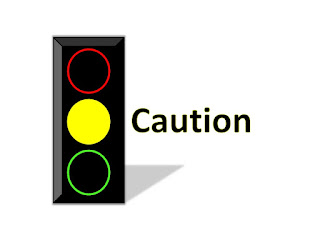NOTIFICATION OF AQUATIC TREATMENT AT BANTAM LAKE BELOW
Do not expose yourself or your pets to the water.
Disclaimer: The information presented below reflects conditions throughout the lake and may differ from conditions on specific shorelines. For information regarding beach closings please contact the Torrington Area Health District or local town officials.


Below we have provided a summary of 1) findings from our visit on Monday, August 16,
2021, and of 2) results of analyses of samples collected that day. These findings come
eighteen days following the copper sulfate treatment of July 29th.
General Observations
Air temperatures were approximately 70°F and skies were mostly clear. A light breeze was detected
coming out of the northeast. No concentrated surface scums or streaks were observed but the water clarity was low.
Methods
AER visited Bantam Lake to conduct biweekly Cyanobacteria monitoring and monthly
water quality monitoring as part of the Bantam Lake Protective Association’s ongoing
lake management efforts. Data collected in the field included measurements of temperature, dissolved oxygen, specific conductance, relative phycocyanin concentration,
and pH at one-meter intervals from the top to the bottom of the water column, total
depth, and Secchi disk transparency. Those data were collected at four sites: the
North Bay Site (N 41.71087° W -73.21155°), the Center Lake Site (N 41.70056° W -
73.22102°), a site west of Folly Point (N 41.70773 W -73.22638), and at a site in the
South Bay region of the lake (N 41.69015 W -73.22728).
A plankton net tow sample using a 10µm mesh plankton net was collected at the Center Lake site. Approximately 500 mL from the top three meters of the water column
were integrated and collected for algae counts at the North Bay and Center Lake sites
using a three-meter-long sampling tube. An additional sample was collected offshore
in front of the sand beach in the South Bay.
These samples were preserved with Lugol’s solution shortly after collection and stored
at 3 C. Samples were also collected from North Bay and Center Lake sites in a similar fashion for analysis of microcystin toxins in the laboratory of Dr. Edwin Wong at Western Connecticut State University. Methods for analyses of the phytoplankton net sample and the integrated samples discussed in our April 30th memo were followed.
Secchi Disk Transparency and Relative Phycocyanin
Secchi disk transparencies on August 16th at the four sites were between 1.52m and
1.72m (Table 1) which yielded the lowest lake average of the season of 1.62m (Fig. 1).
The average relative phycocyanin concentrations in the top three meters of the water
column at each site and the average from the top three meters for the lake were the
highest of the season (Fig. 1), suggestive of the greatest cyanobacteria biomass at
each site and for the lake on average for the season. Phycocyanin is the photosynthetic pigment unique to the cyanobacteria and is commonly used as a surrogate for
cyanobacteria biomass.
Cyanobacteria Cell Concentrations and Algae Community Characteristics
Cyanobacteria cell concentrations on August 16th from the North Bay and Center Lake
sites, and the average of those concentrations were the highest of the season and exceeded 100,000 cells/mL (Fig. 2; Table 1). These concentrations are described in the
State of Connecticut’s guidance for Health Departments as characteristic of Visual
Rank Category 3 levels. Recommended interventions for that category, including posting of beach closure signage, can be found in the State’s guidance document (CT DPH
& CT DEEP 2019). The concentration in the sample collected in front of the beach exceeded 80,000 cells/mL.
The filamentous Aphanizomenon spp. had the greatest cell concentration of all cyanobacteria counted in the samples analyzed. Several trichomes (filaments) had terminal
heterocysts and may have been Cylindrospermopsis spp. Other Cyanobacteria genera
encountered in samples included Aphanocapsa spp., Aphanothece spp., Dolichospermum spp., Gomphosphaeria spp., Microcystis spp., Pseudoanabaena spp., and Woronichinia spp. Most of these genera are considered toxigenic (CT DPH & CT DEEP 2019,
Cheung et. al. 2013, USEPA 2020).
Water Column Temperature and Oxygen Characteristics
Water temperatures near the surface on August 16th, which were between 25 and 26°C
(Table 1), were slightly up from those measured on Aug 3
rd
. The water column at all
sites, except the South Bay Site, was stratified. The thermocline at the North Bay and
Folly Point Sites was located between 4 and 5m of depth. At the Center Lake Site, the
thermocline was located between 6 and 7m of depth. Oxygen concentrations below the thermocline were <0.1mg/L. At the mixed South Bay Site, the lowest oxygen concentration recorded was 4.6mg/L at approximately 4m of depth.
Literature Cited
Cheung MY, S Liang, and J Lee. 2013. Toxin-producing Cyanobacteria in Freshwater: A
Review of the Problems, Impact on Drinking Water Safety, and Efforts for Protecting
Public Health. Journal of Microbiology (2013) Vol. 51, No. 1, pp. 1–10. See
http://www.jlakes.org/ch/web/s12275-013-2549-3.pdf


NOTIFICATION OF
AQUATIC TREATMENT AT BANTAM LAKE
Selected areas of
Bantam Lake will be chemically treated with copper sulfate to manage nuisance
blue-green algae. The treatment is
scheduled for Tuesday, August 24th. Use
of the lake water within and for a distance of 500-feet beyond the treatment
areas (shown below) will be restricted for swimming on the day of treatment
only. There are no restrictions on boating or fishing and the CT DEEP &
Town boat ramps will remain open. Prior
to treatment, the lake shoreline will be posted with signs showing the
treatment areas and applicable water use restrictions in accordance with DEEP
requirements. This chemical treatment at Bantam Lake is being performed,
pursuant to a permit from CT DEEP. The
chemical treatment is but one part of a comprehensive watershed assessment and
in-lake management program that is well underway. The project’s organizers and proponents
include the Bantam Lake Protective Association, the Bantam Lake Authority, the
Towns of Morris and Litchfield, and the White Memorial Foundation. SOLitude Lake Management of Shrewsbury, MA,
is the CT licensed company performing the chemical treatment and is a
consultant to the Bantam Lake Protective Association.






